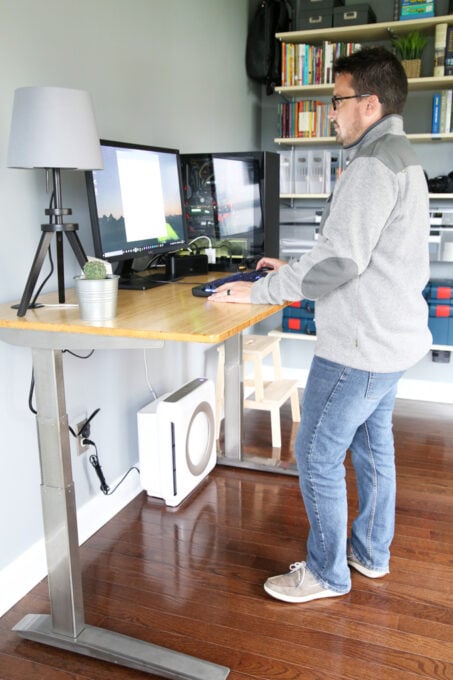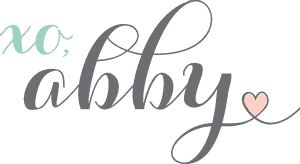Should you use a digital task management app or a paper planner?
Digital vs. paper planning– which is better? Find out as we explore the pros and cons of paper planners and digital task management apps in this post!


Our lives are a compilation of how we choose to spend our time each day. It’s important. And yet, it’s so easy to get to the end of a day or week or month or even year and feel like we didn’t get to spend much of our time doing the things that matter most to us.
Often we get so caught up in the “emergency of the moment” that we never get to make significant progress toward the bigger goals we have for the future. But believe it or not, it is possible to knock out our more mundane daily tasks while still making time for the truly important things.
We just need a solid system to help us get there.
When we’re trying to decide between a digital or paper task management solution then, the most important question we need to ask ourselves is,
“Which one will best help me create a system to balance both the urgent and the important so I can spend the largest amount of my time on the things that matter most to me?”
I’m going to turn it over to Donnie to help us figure it out!
Digital vs. Paper Planning– Which is better?
Starting with a Paper Planner

I know it may seem unlikely because I talk a lot about going paperless, but I was a physical planner guy for years. I bought my first day planner in college, and I quickly made it a consistent part of my routine. Every Christmas break I would take a trip to the local Office Depot and pick out my new planner for the upcoming year.
I would spend a day writing down all of the important events and dates in the calendar portion of the planner. When I received a syllabus for one of my college classes, I would meticulously write down due dates for assignments and tests.

The physical planner was an important part of my productivity. I even loved the process of planning my day the night before and writing down all the things that I wanted to accomplish the next day.
When I finished college, I continued to purchase a new physical planner every year. It was still an okay solution. But as my life got more complicated with a house, a family, and a job, I began to see the limitations of this method. Life as an adult was infinitely more complicated than the relatively simple times of being a student.
Moving to a Digital Task Management App
Eventually, an app called Wunderlist caught my eye. It allowed me to create lists and manage my tasks in a digital format. I had an iPhone at this point. And I was amazed at how my tasks would sync between the Wunderlist iPhone app and my Mac app.

This, combined with a beautiful design and intuitive features, made my productivity skyrocket. I no longer felt the inherent limitations of pen and paper. These were limitations I really didn’t even know existed until Wunderlist became part of my routine.
Wunderlist was purchased by Microsoft and was eventually discontinued. But since I first used Wunderlist when it was released in 2011, I’ve used a digital task management app every single day for the past decade. It’s become such a (positive) habit in my life, that now it’s just muscle memory.
Choosing Digital Task Management Over Paper Planning
I’m not saying there’s no reason to use pen and paper at all. Sometimes physically writing down tasks and ideas can be great for a brainstorming session or to push past a block in productivity. And you know we love printables around here for organizing our initial thoughts and to-dos. (We would then just schedule those ideas into our task management app for implementation.)
But it’s become increasingly clear over time that when it comes to balancing our daily to-dos with taking action on longer-term goals and projects, digital task management apps have many benefits compared to their paper counterparts.

Digital task management apps allow us to do so much more than just creating a to-do list. They make it possible to prioritize and accomplish longer-term projects and the things that mean the most to us in life.
Here are a few reasons why digital task management apps can help take our planning to the next level…
7 Benefits of Using a Digital Task Management App
1. Ease and Convenience of Task Collection
If there is one item that we have with us in almost every situation, it is our phone. When we’re out grocery shopping, we have our phone. Even when we are on vacation, we have our phone. When we are mowing the lawn, we have our phone. When we are at a sporting event for our child, we have our phone. For better or worse, it’s always with us.
When I used a physical planner, I certainly didn’t always have it with me. It stayed on my desk at home and even traveled with me to work. But it didn’t follow me around the house, the yard, or the running trail. This is a problem when it comes to task collection.
There have been several instances when I’ve stopped for a second when mowing the lawn to pull my phone out of my pocket, hard press on my task management app icon, and add a quick task to my task management inbox. It takes five seconds, and then I don’t have to worry about that thing anymore.

Before I used a digital task management app, something would pop into my mind that I needed to do (like writing an excused absence note for one of my kids, for example). But unless I was sitting at my desk with my planner, that to-do item would just float around in my head.
Maybe I would remember to do it. Maybe I wouldn’t. But I would always have this very minor low-level constant stress of not knowing if I was forgetting something or not. That doesn’t happen anymore because task collection is so much easier with a digital task management solution.
2. Simplicity of Task Maintenance
Task list maintenance is a simple but important benefit to using a digital task management app. No matter what solution we use– whether it’s a physical planner or a digital task management solution– there is some level of maintenance.
I go through all my possible tasks weekly, typically on Sunday evening. I read through all my potential tasks, delete irrelevant ones, organize tasks in my inbox into certain projects, and decide which tasks I want to accomplish that week, usually designating them with tags.
This weekly maintenance can be done with a physical planner. But writing and rewriting task lists, flipping back and forth to different parts of the planner to transfer over tasks accurately, crossing out tasks in order to rearrange priorities, and other manual functions that are necessary with a paper planner are just more time consuming. They’re also messier since, in order to change or rearrange items and tasks, we either have to cross them out or attempt to erase them.
I can complete weekly maintenance and be organized for my week ahead with my digital task manager in less than 15 minutes. And since it’s easy to drag and drop and reorder tasks, everything stays neat and tidy on my screen.

3. Implementation of Recurring Tasks
We all have tasks that we need to perform each day, week, month, or year. Personal tasks like working out, spending time in prayer or meditation, doing laundry, or making a grocery list all happen at generally regular intervals in our lives.
Similarly, work tasks like processing payroll, checking email, updating spreadsheets, or completing monthly reports all need to happen on a recurring basis.
In a paper planner, we would need to rewrite each of these tasks every time we want to complete them. But with a digital task manager, we can create the task once, set it for the interval at which we want it to recur, and then it automatically shows up for us each time we need to complete it.
The use of recurring tasks can save us a ton of time. And it also ensures that we don’t forget anything important since the tasks are automatically added for us.
4. Increased Flexibility for Task Organization
Digital task management solutions are also inherently more flexible than using a physical planner.
Depending on changes with our various projects, life situations, or even just how our brain works, it can be helpful to reorganize the way our tasks are laid out. Even visually, sometimes having a fresh start can be helpful for our productivity.

With a task management app, we can easily change how we organize our projects or task lists.
Maybe at one point we thought it would be helpful to be very granular and create dozens of projects and lists. Later we might decide that we would prefer to organize things not so much in terms of projects, but in terms of areas of responsibility in our life. We may also decide that instead of a list, we prefer to see our tasks in a kanban board style.
Sometimes those little changes can make a big difference for our focus and productivity. Fortunately, with most digital task management apps, those changes are quick and simple. It’s a matter of dragging and dropping a few things to reorganize our tasks.
With physical planners, it’s hard to have a fresh start without purchasing a new planner and going through the whole setup process again. Digital task management solutions are simply more flexible than their paper counterparts.
5. More Effective Long-Term Planning
Digital task management solutions offer more options, space, and flexibility for long-term planning.
Some physical planners have a little bit of space for mapping out big goals and long-term planning, but they will always have a finite amount of room available. And as our lives change and evolve and our goals change right along with them, it’s a lot harder to adapt notes and plans we have written out in a paper planner.

Digital task managers aren’t limited by pages, so action steps for our bigger, more complicated long-term projects can easily be front and center, right along with our day-to-day tasks. And we can access, review, and change those tasks with just a few clicks.
When I used my paper planner, I found it really helpful and easy to plan my next day or maybe even my week. But it was much more difficult to plan and schedule tasks related to big goals and long term projects because of lack of space and flexibility.
6. Ease and Speed of Reference
Another helpful feature of digital task management apps is their reference capabilities. I’m constantly surprised by how often I use the search feature in my task management app to find previously completed tasks.
Maybe we want to know when we completed a task. Or maybe we want to see the notes or attachments related to that task. After typing a few words in the search bar, we can immediately access previous tasks and all of the information that goes along with them.

To find our past information in a paper planner, we have to flip through a bunch of pages until we find what we’re looking for. And if the task or project happened in a previous year, we may even have to search out our old planners in order to find the information.
7. Collaboration Capabilities
This final benefit of digital task management solutions may not apply to everyone. But if you own a small business or work with a small team of people, the ability to collaborate with others through a task management app can greatly improve the organization and productivity of the entire team.


Abby and I use our digital task manager to plan out all of the major (and minor!) projects for our business. We can assign tasks and due dates for each other. We share links and files related to each project. And we can easily document what work has been completed and what still needs to be accomplished.
That collaboration really saves a lot of time and helps minimize distractions during our workday. This type of integrated collaboration isn’t possible without a digital task manager.
Digital Task Management vs. Paper Planning: Final Thoughts
I want to reiterate again that I’m not an anti-paper and pen person. Putting some thoughts down on paper can help get ideas flowing, create an initial organization structure for a project, or make certain items more memorable.

But when it comes to implementation of tasks, ideas, and long-term goals over time, there are some major advantages to digital task management that can make a big difference in terms of productivity and peace of mind.
Let’s get ready to have our most meaningfully productive year yet!



Hi there – I recently realized that I had purchased “Paperless Made Simple” and I think even “Impactful Habits, Organized Homes”. But I have never actually taken the courses. You mentioned that you were going to provide purchase of Paperless Made Simple to work with Tasks Made Simple. Can I be included because I purchased the course already? I think I’m biting off more than I can chew because I’m trying to go paperless and also trying to Declutter my House and I’m getting really confused about all of it! Please help me unclutter my mind and get mentally organized!!! Thank you.
Hi, Joyce! Paperless Made Simple and Tasks Made Simple are two different courses. But one of the task management options in Tasks Made Simple is Evernote, which people are already using if they’ve implemented Paperless Made Simple. So the tasks course would just teach an additional way to use it. I hope that makes sense.
As far as the courses go, I would pick the one you already own that you’re most excited about and work through that. Then make your way through the other one. If you still want to do Tasks Made Simple after you get through those, it will still be available then! 🙂 I hope this helps!